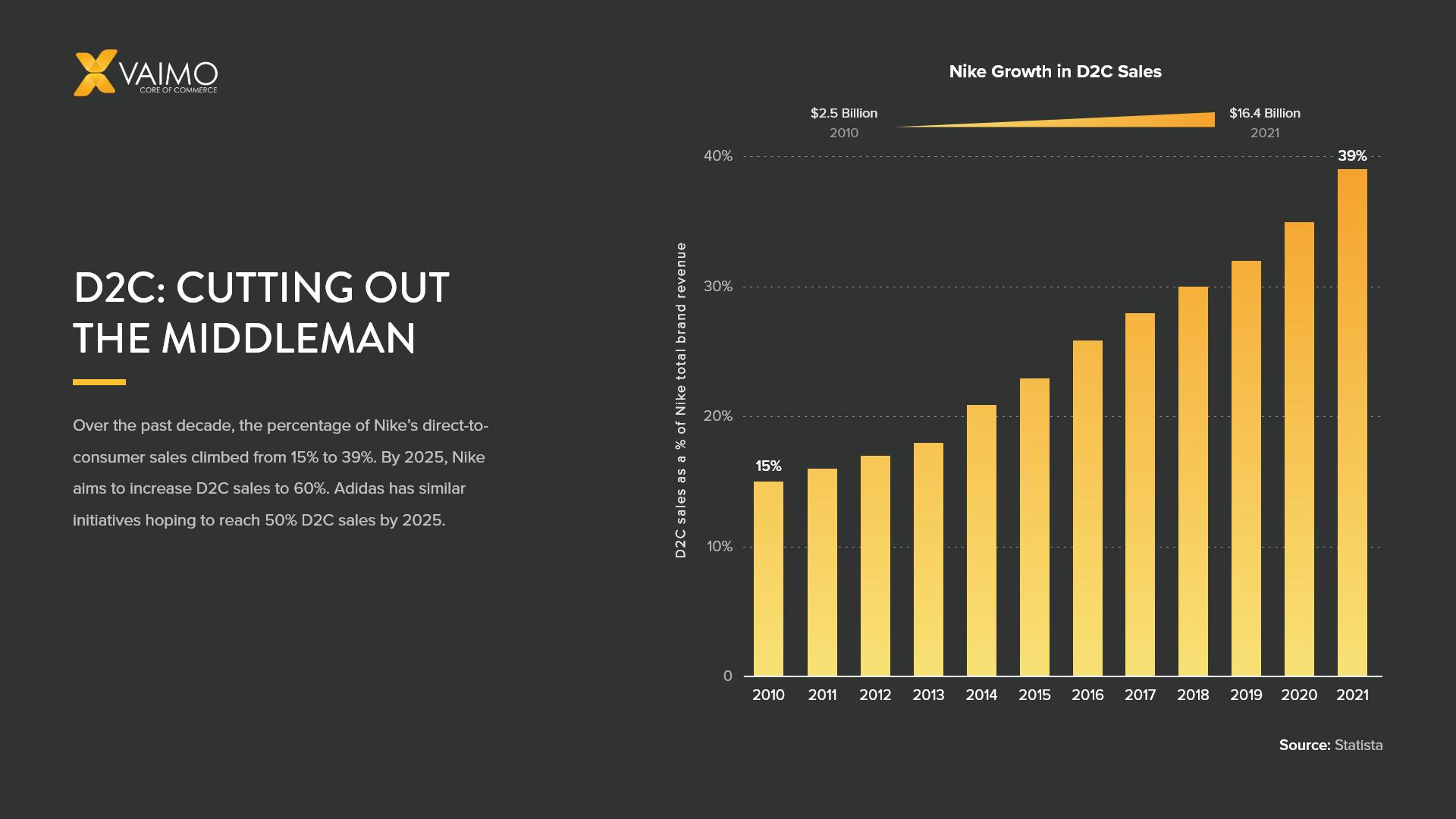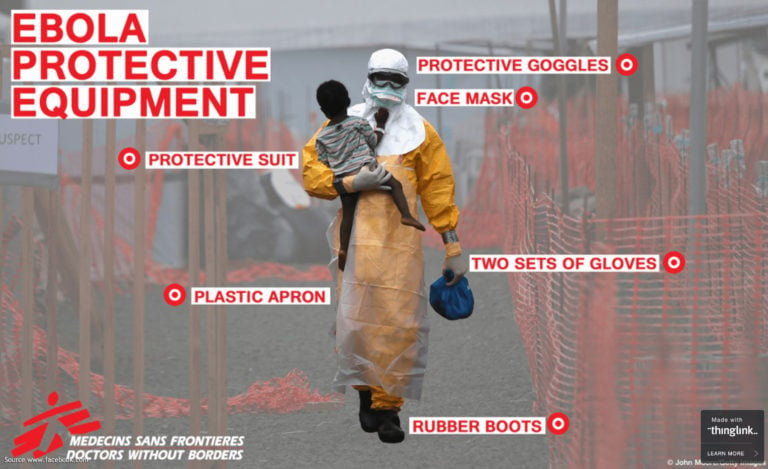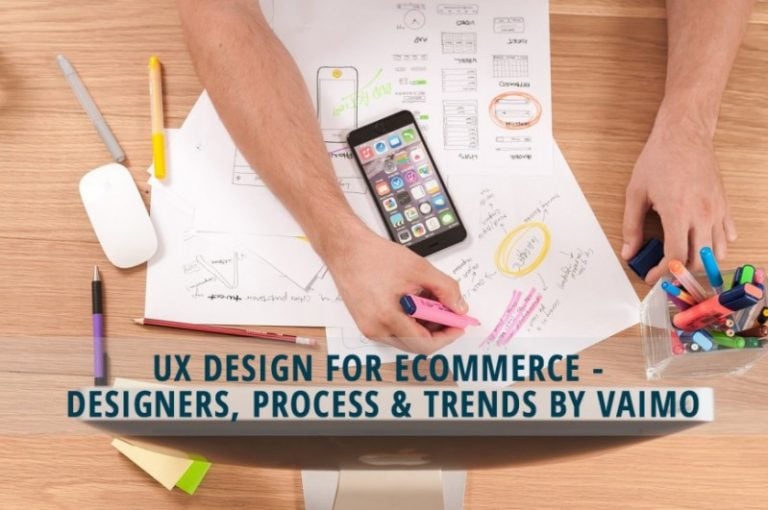Modern retailers know that the future of their brand is reliant on their digital experience—consumer shopping has shifted almost entirely to ecommerce and digital commerce experiences. The Covid years have accelerated what was becoming the mainstream—online shopping became a necessity and the numbers only continue to rise.
For new brands and brands that once had a strong brick-and-mortar presence, this shift is simple—focus on the digital buying experience and enjoy the ride. But for established brands that have long since taken advantage of the traditional distributor model, the shift isn’t quite as simple.
Switching to direct-to-consumer (D2C) can sometimes lead to conflict between your new ecommerce channel and distributors. In this article, we’ll talk about the opportunities D2C offers for both you and your distributors, and how to mitigate D2C channel conflict.
Related reading: What is D2C Ecommerce?
Endless Omnichannel Opportunities for Brands
When considering a multi-channel or omnichannel sales strategy, brands have both existing and emerging options, and marketing teams are inventing new ways to insert ecommerce into platforms that we have not before considered. In-game commerce, subscription retail, live-stream shopping, and social commerce are all solidified channels today and existed in a much more limited capacity just two years ago.
The possibilities to come are endless as Snap and Facebook drive us toward the metaverse. As our online presence and our physical existence merge, the phygital experiences with which brands will offer their products will be never-ending. And emerging marketplaces of products are no exception.
Robert Poratti, Product Marketing Director at VTEX, a partner of Vaimo, noted that “the D2C trend that many companies are considering is all about getting closer to their customers and increasing the lifetime value of that customer relationship. But accomplishing that requires a closed-loop process that enables companies to attract new consumers to their brand, create an experience that keeps them coming back and deliver customer service and support. Meanwhile, consumers expect engagement with their favorite brands that lets them find and purchase products without being sent someplace else, receive products in a way and timeframe they have come to expect, and the ability to provide reviews and engage through social channels in a manner that creates loyalty and drives others to the site.” This quite nicely sums up the benefit of a true omnichannel relationship.
Related reading: What is Omnichannel Retailing
However, knowing, as they might, that the potential of new D2C sales channels is unlimited, decision-makers often wrestle with the practical execution of a shift that doesn’t leave their distribution partners disappointed. Or even worse—they fear distributor retaliation becoming a threat to the core model of their existing sales operations. Will their partners switch to competitive products? Will they promote their own or others’ products more heavily? Will distributors attempt to limit the ability to sell directly by pursuing legal channels or legislation? These questions impact the D2C decision.
D2C channel conflict: Automotive and alcohol markets
Automotive and alcohol markets are great examples, where the D2C switch has not gone so smoothly. These markets are two of the most obvious and dramatic switches from distributorship models. Both were once highly regulated verticals with no appetite and/or option for a direct-to-consumer model but even that has changed.
Automobile companies that once pushed all of their products through dealership networks are now marketing not only automobiles but subscriptions, services, and products to the consumer directly. With its Porsche Drive program, Porsche is allowing the consumer to drive the exact model that they want, the minute they want it and then to trade it for a new one when they’re done. Kjell Gruner, President and CEO of Porsche Cars North America, states that the program’s success is founded on the fact that 80% of Porsche Drive customers are new to Porsche.
Dealership and distributors in both markets have gone as far as to seek legislation to keep their providers from going D2C but the switch doesn’t have to be contentious. By adhering to a few principles, brands can transition to consumer-facing options without facing backlash from existing partners. Once your sales channel partners realize that they can benefit from your D2C efforts, it opens up a new world for your relationship.
Related reading: 6 Advantages of Automotive Ecommerce
|
Want more advice on this topic? |
How to mitigate D2C channel conflict and maintain great distributor relationships?
Like any relationship, the key to maintaining a healthy balance is communication and a transparent strategy. At Vaimo, we have helped over 500 brands shift their commerce focus to the digital world and there are very few channel models that we haven’t seen. Vaimo can help clients adopt tested and clear strategies and find creative solutions that enable D2C ecommerce while maintaining the relationships that their distributors have become accustomed to.
At the forefront of this digital transition, honesty is the only policy. Being candid with your channel partners about the need for the control of a D2C experience is easier than ever to explain. With the recent rush to optimize customer experience and engagement as well as gather first-party customer data, it would be nearly impossible to deny the logic of integrating a D2C model.
The customer relationship from sales and PIM to services, engagement, and loyalty are all a part of the robust need for an excellent customer experience (CX). Having control of the experience is a critical part of the need for direct-to-consumer engagement. Being able to show the depth of your full product range, offering all of the specifications and options that are important to your customers, and optimizing your pricing model are all benefits of maintaining your own D2C experience.
Related reading: The Complete Guide to D2C
In a unique example of blending both your own product catalog and that of specific partners, Nuna Baby, a Vaimo client, features all of its products on its site but allows for certain color combinations or configurations to be marketed as “sold exclusively at Neiman Marcus” and features both a BUY NOW button and a SHOP LOCAL button, offering their channel partners as much of a shot at the business as they have themselves.
“Creative approaches like Nuna’s that both include and benefit your partners while also building the depth of your customer relationship should be at the heart of your emerging D2C strategy.” – Brian Dearth, Vaimo Head of Strategy
D2C ecommerce benefits for you—and your distributors
Increased revenue
The obvious secondary reason to justify a D2C channel is increased revenue—for everyone. Most shoppers will search an ecommerce marketplace for an item first, looking at price, options, and variations but often if the choices aren’t robust enough or they are lacking information necessary to make a decision, the manufacturer’s or creator’s site is their next stop.
Imagine searching for a bento box on Amazon and finding a brand like Sistema that you’ve purchased and liked before and seeing that the purple bento box exists but is out of stock. Your next move is likely to the Sistema website where you can see a list and photos of their entire product line but cannot purchase directly. With the only option of clicking WHERE TO BUY and searching for a store near you, you’ve completely lost the convenience of adding the box to your cart and likely added a layer of friction that could cost you the sale entirely. Seeing the purple bento box and having it just out of reach is digital torture and will increase abandonment and eat away at your revenue very quickly.
The partners that distribute your product understand this; after all, they likely have hundreds of you and are acutely aware that they can’t be as good of a shepherd to your products as you can and ultimately don’t have the time or focus if they’re doing it right. Being clear with your partners that your D2C goals are in place to elevate your brand, customer experience, engagement and revenue should be an indicator to them that you are including them in all of those intentions as economies of scale.
First-party data
Ultimately, your channel partners, if nothing else, will understand the benefit of you having access to first-party customer data. Data analysis is everywhere. Those who aren’t focusing on their customer data are falling behind at rapid speed.
The idea of a modern customer experience relies on your ability to analyze and process consumer data in the seconds that it takes for a consumer to click on a product page. Your ability to map your user journey and make decisions about your brand based on customer behavior affects everything about the CX. From personalization and suggestive selling to pushing your core values, all of the consumer data is imperative.
This data will also drive brand loyalty and empower both your site and those of your partners to increase revenue, once again having as much benefit for your partners as it does for your brand. It also helps your partners to understand more about market segments and pinpoint the group(s) for targeted advertising and social media investments.
Brands like Nike and Pepsi have launched aggressive D2C experiences recently and are enjoying all-time high sales from both their own D2C experience and that of their channel partners. The proof is there—your D2C efforts help your partner channels, you must simply keep them in mind when making decisions and enlighten them along the way.
“…trends suggest a real D2C boom in the landscape of traditional B2B companies. One of the reasons behind this is the rush towards the customer insights that kind of model can guarantee you.” – RJ Rountree, VTEX
Key takeaways
The research shows that the demand for a D2C experience is real. And, concerns about channel conflict can be mitigated. Approaching your distributors with an open, transparent, and mutually-beneficial strategy is the key to maintaining those relationships as you take advantage of the opportunities inherent in a D2C model.
With our team of creative strategists and architects, Vaimo can help you to understand how your brand can benefit from direct-to-consumer commerce and how best to approach the process. Additionally, we can assist you in implementing the right technology solutions to ensure that your business can continue to scale over time. Reach out today to learn more about optimizing your strategy.











